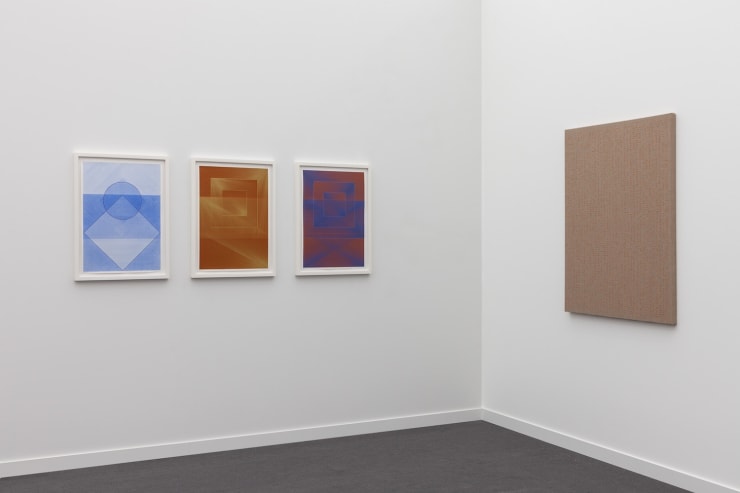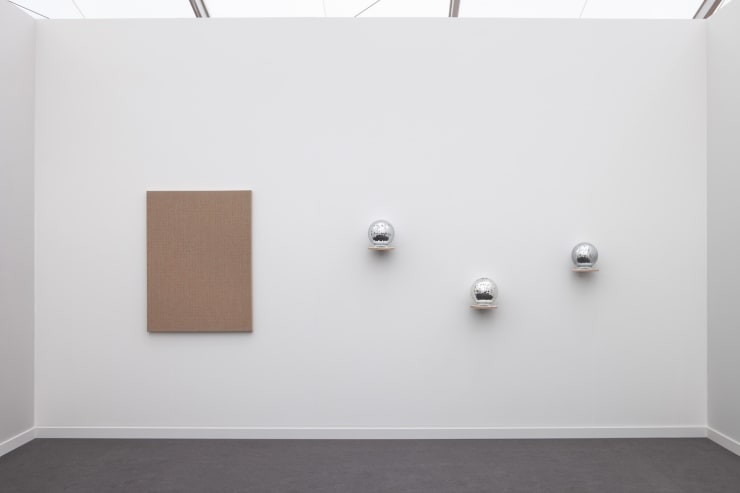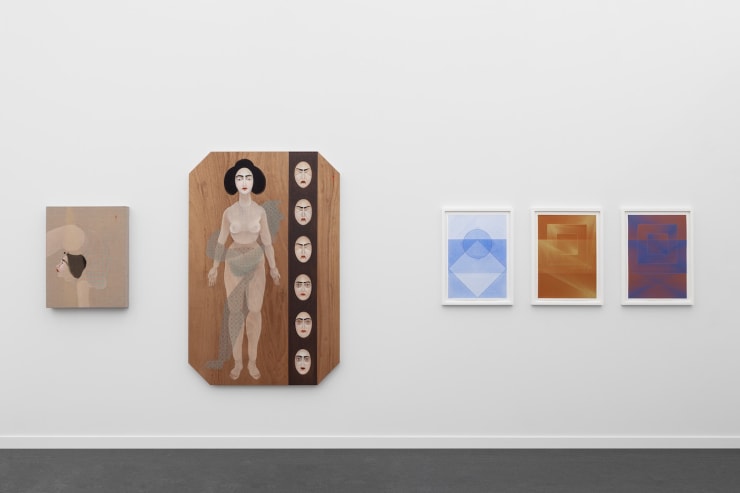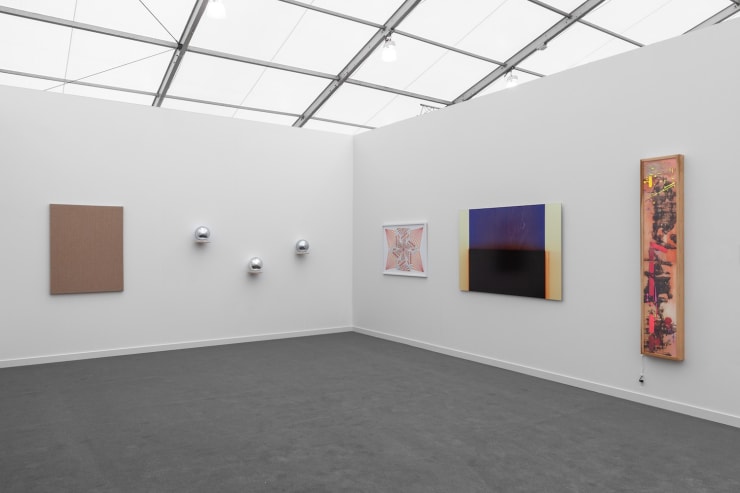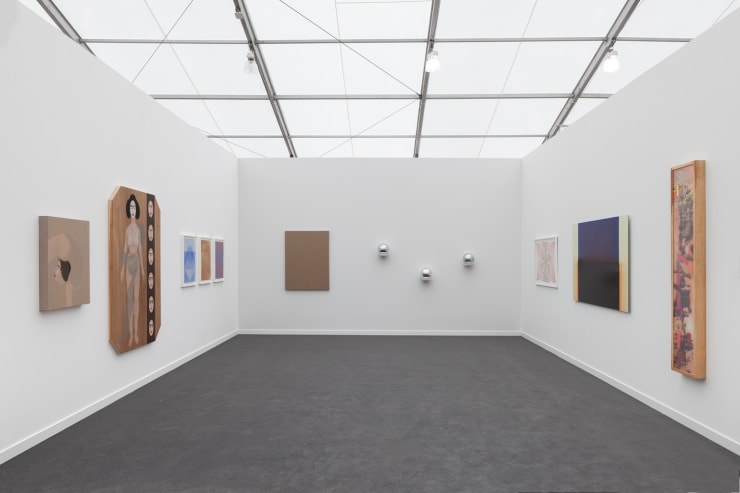The Third Line participates in the 8th edition of Frieze New York with a group presentation featuring works by Iranian and Arab women artists, all who either re-side in America or have spent time in the country. Imbued with their respective identities, works by Hayv Kahraman, Laleh Khorramian, Monir Farmanfarmaian, Pouran Jinchi and Sara Naim reflect the artists’ varied life experiences, be it through practice, medium, or subject matter.
Hayv Kahraman’s practice pulls on her personal experiences of migration to Europe (and then the United States) to create paintings, drawings, objects and performanc-es. Her work engages the viewer, utilizing elements of calligraphy, Italian Renais-sance painting and illuminated Arab manuscripts to reflect on the placelessness and experience of diaspora, engaging aesthetic notions and codes of beauty to depict often psychologically brutal subjects.
The work of Laleh Khorramian explores aspects of human nature and emotional states of consciousness. While she combines animation and drawing in order to capture and emphasize particular stages of the art-making process, Laleh removes cultural and historic specificity from her narratives, with the aim to highlight the essence of visual forms. In so doing, she harnesses the possibilities of chance, acci-dents and manipulation, with the final work’s obfuscatory nature allowing room for individual interpretation.
Shown for the first time, Monir Shahroudy Farmanfarmaian’s drawing reinterprets the aineh kari technique of the characteristic geometric mirrored mosaics the artist is best known for. The intricately layered coloured lines of the felt tip composition invoke the architectural forms of nomadic tents and minarets, while the addition of glitter nods to the brilliantine reflections of its inspiration.
Pouran Jinchi’s practice draws parallels between art and language as modes of communication that both reveal and obscure meaning. In her recent body of work, she explores the ways military aesthetics have saturated our visual perceptions. Drawing on military codes that cross linguistic borders, Jinchi pushes the bounda-ries of abstraction. She renders Sun Tzu’s The Art of War into Morse Code that she meticulously hand embroiders onto linen cloth. She transforms naval signal flags into linear abstract drawings on colorfix paper. Her calligraphic lines evolved into geometric grids, the linear into abstract structural form.
Through visualising micro-formations, Sara Naim’s practice dissects how proportion shapes our perception and notion of boundary. She explores the physicality of these ‘boundaries’ and its form, with questions of: If borders do not exist on a cel-lular scale, can we define ‘border’ on a macro scale? Can shape be considered an object in itself?
